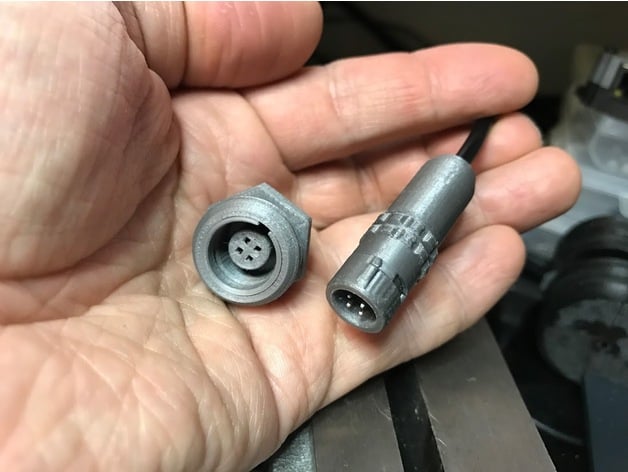
PIN-header connector housing
thingiverse
WARNING! This is a very complicated print, requiring sanding and cutting and gluing when mounting, with settings dependent on printer quality. Be prepared for multiple attempts with different settings and considerable work on printed parts before achieving success. This experiment aims to create a working connector using 2.54mm pitch pin-header 2x2 female and male. I've frequently used pin headers in experiments, so it seemed like fun to make them look nicer. This connector will be used for a project where an Arduino controls temperature, ventilation, and light in my 3D printer cabinet. I've printed most tests with 0.05mm layer height, and the threads work very well at first but often snag, requiring gentle back-and-forth movement until they run smoothly. I tried various methods for locking, including flexing pieces on the side that push inward to release, but the material was insufficient, so I changed to a locking ring system where the locker ring is turned to lock the connector in place. This design inspired by Lemo and created using Fusion 360 features a locking ring system with a tiny bulge that prevents the connector from falling out too easily. It's not a super-strong lock, but it will work for most applications. I'll probably release updated versions of this design as needed. Print Settings: - Printer: Prusa i3 mk2 - Rafts: No - Supports: Yes - Resolution: 0.05 - Infill: 100% - Notes: Works very well with Prusa PLA. Please test with other materials and report your results in the comments! Post-Printing Instructions: After printing, use a gentle touch to push the connector together. The print layers leave tiny threads on the surface that can cause snagging if not sanded smooth. If the connector is printed with rough surfaces, these threads can make it extremely difficult to remove the connector from the housing. Important Tip! When assembling the male connector, first insert the cable through the male outer shell, clamp, locker ring, and male housing, then solder the 2x2 pin header. Next, push the pin header into the male insert, making sure it's in the correct orientation before pushing it into the male housing. The easiest way to achieve this is by sliding the pins into the female connector and using that to guide the insert into the male housing. The fit must be snug; you can use glue to secure the insert in place if necessary.
With this file you will be able to print PIN-header connector housing with your 3D printer. Click on the button and save the file on your computer to work, edit or customize your design. You can also find more 3D designs for printers on PIN-header connector housing.
